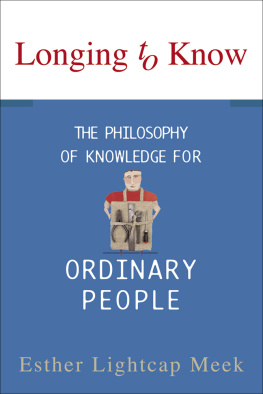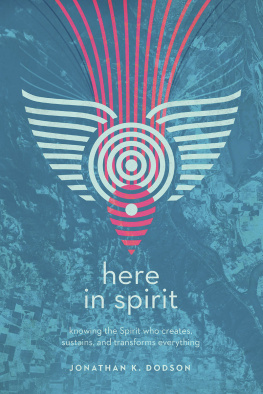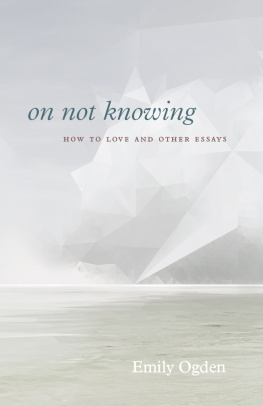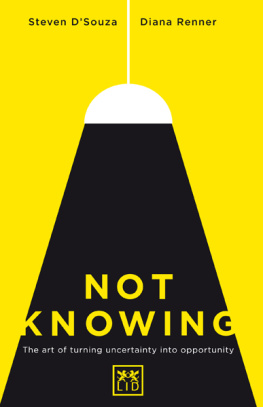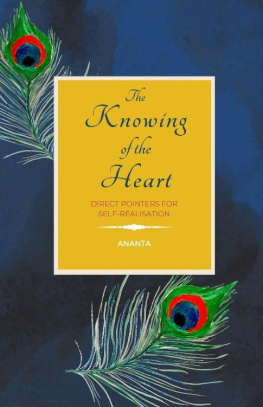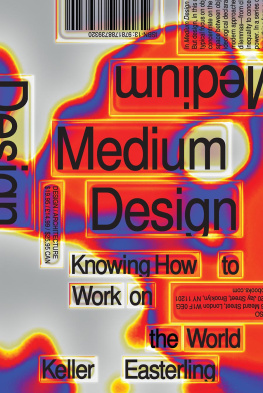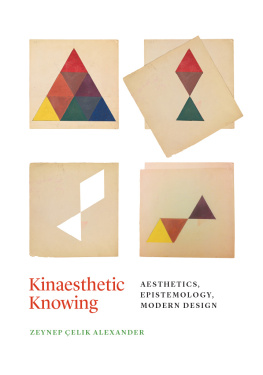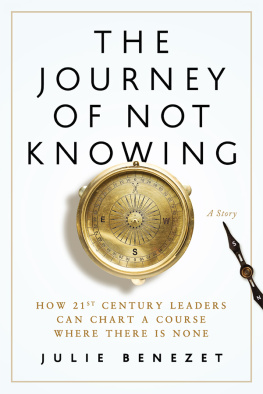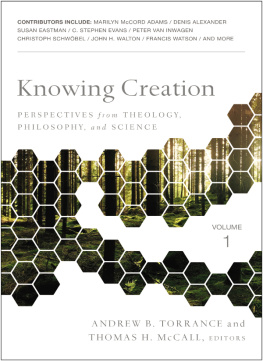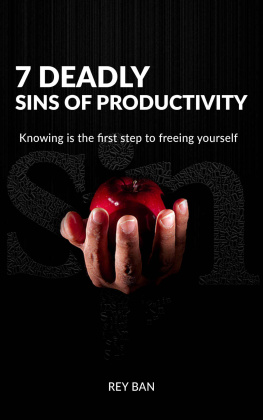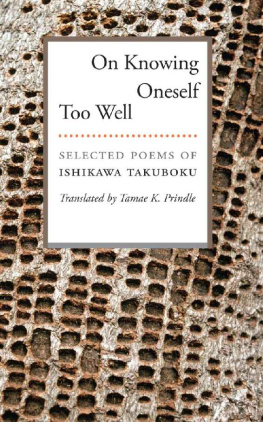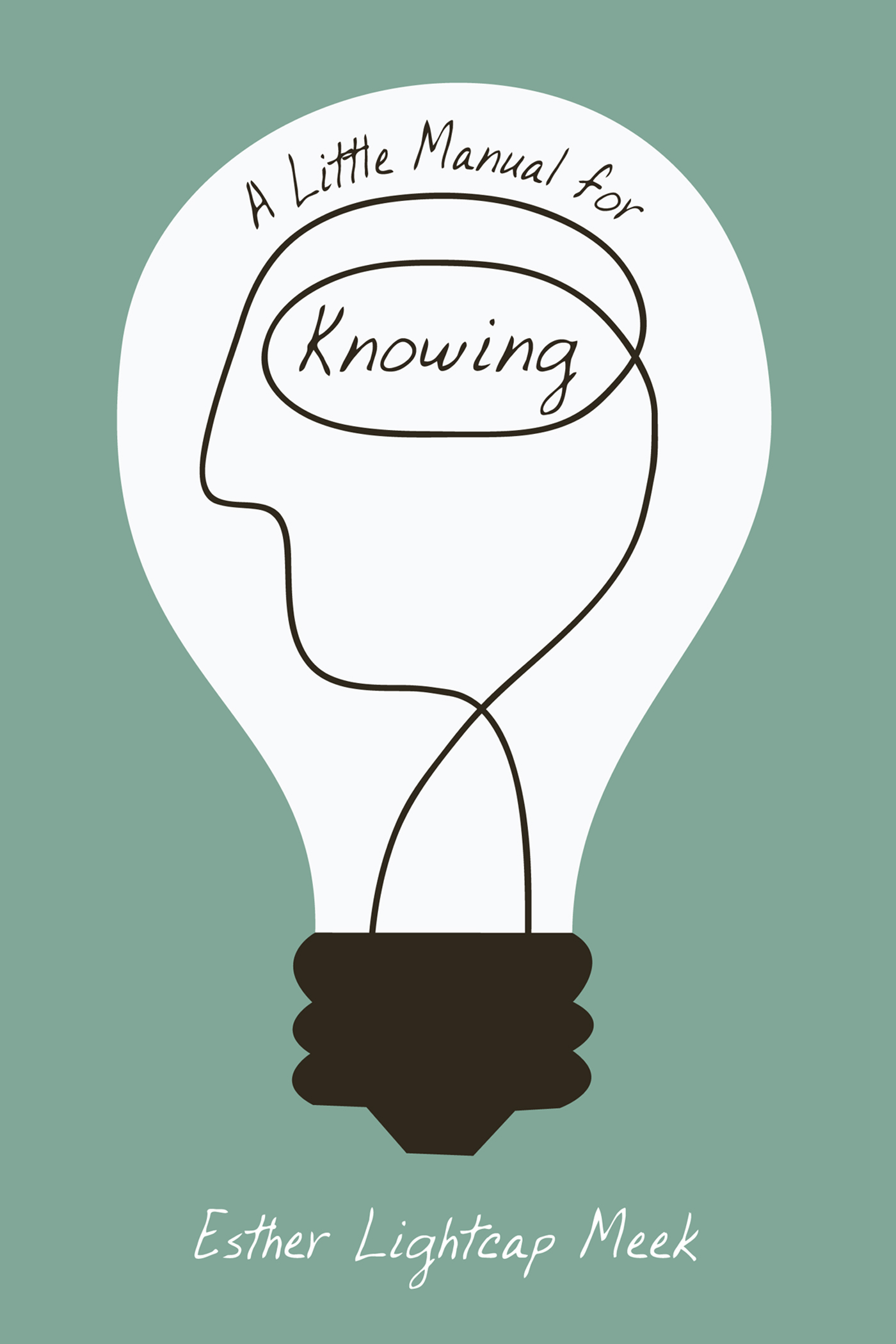In a conversation some years ago, Esther Meek suggested to me that our first knowledge as human beings is the knowledge of being lovedin the wombs, at the breast, and in the embraces of our mothers. This first knowledge, she suggested, is paradigmatic for all of our knowing. To know follows being known; being known is woven into being loved. This suggestion has, ever since, been shaping my epistemology as a scholar, but more deeply, my understanding of my knowing as a human being in all of life. Readers of this A Little Manual for Knowing are embarking on an adventure that may, similarly, make a decisive difference in their learning and in all of their lives.
Gideon Strauss Executive Director, Max De Pree Center for Leadership, Fuller Theological Seminary
With this pearl of great value, Esther Meek lovingly and confidently shepherds us on a pilgrimage, a reconsidering and recovery of what it means to know. Her A Little Manual not only is about epistemology; indwelling itreading the text and reflecting on its exercisesis to practice and experience epistemology. For those who commit to the journey, the hoped for gifts await.
Bruce A. Vojak Associate Dean of Engineering, University of Illinois at Urbana-Champaign
When I read anything Esther Meek writes I find myself with holy envy longing to be a wiser man. This brilliant little manual captures the depth and simplicity of her work and invites the reader to apply wisdom to real life complexities and problems. Esthers wisdom is immense, playful, and heart transforming. This manual will inform, enlighten, and free you to know how to know in new ways that will transform your heart.
Dan B. Allender Professor of Counseling Psychology and Founding President, The Seattle School of Theology and Psychology
If I were asked to choose one key curriculum to be taught in a freshman class of any liberal arts university, it would be Esther Meekss class on epistemology. If I were asked to choose one book, it would be A Little Manual for Knowing. At (the) Fujimura home we choose one book each summer to read together and discuss with our grown children. This year it will be A Little Manual for Knowing essential reading for every university, every business, every church, and every home.
Makoto Fujimura artist
For my family:
Starr and Alex, Stacey and Evan, Steph and Garrett,
and the budding generation
And for Dr. Robert M. Frazier,
colleague and friend
With wonder and gratitude
Part I
Pilgrimage
chapter 1
Love
C hances are you think it strange to be setting out on a venture of knowing by talking about love. How can you love what you do not know? Do we not first know and then, possibly, love? Knowledge has nothing to do with love, anyway. Love would get in the way of facts. Love is an emotion. Its subjective and not rational. Love may be all you need, but the songwriter didnt have in mind starting a business or going to college. Love isnt going to crack the code of reality. We need information.
This kind of thinking reveals an underlying epistemic orientation of knowledge - as - information. Our unexamined preconceptions of what knowledge is tend to disconnect talk of love and relationship from knowledge. This outlook, this Little Manual proposes, can hamper any knowing venture. Epistemological therapy is needed.
This little manual offers such therapy. But right here at the beginning, the reader will have to decide to trust the Little Manual that this will happen. This can be offensive and threatening. But it too is an epistemic matter. Exercising some kind of trust at the beginning of a knowing venture, and even throughout it, proves to be a necessary and helpful epistemic practice.
Knowing and being go hand in hand
To begin talking about love in knowing, first we need to say something about reality and life. Epistemology and metaphysics cant help but go hand in hand. Reality is what we know. What we think of the one shapes what we think of the other. If you find that you think there is nothing more to reality than what lab experiments uncover or our eyes see, a little additional thought should show that this claim itself is not the sort of thing that lab experiments could ever uncover or eyes ever see. It is a metaphysical and epistemological claim. And it is the sort of claim that shapes what we think we see and how we understand knowing ventures. Metaphysics is unavoidable. It is deeply concrete and practical.
This book tackles things from the knowing side of the connected pair. But we can expect that the orientation the Little Manual helps you develop will in turn reshape your generally tacit view of reality. And here at the beginning, we have to say something about reality to start to make sense of why knowing begins with love.
Reality: impersonal bits or personal gift?
Our knowledge - as - information orientation additionally shapes our picture of reality. It tends to reduce reality to two - dimensional ones and zeros, impersonal bits, so much data to be collected. This way of seeing the world fits with our epistemic view that gaining knowledge means passively collecting impersonal information. The goal in this approach to knowledge can be to eliminate any mystery from an indifferent universe, amassing all the bits, eventually gaining comprehensive knowledge. It is a kind of mastery or conquest.
On the contrary, the Little Manual will say, reality is gift , and love is at the core of all things. It is not impersonal; rather, reality is person-like. It is not passive and inert. It is richly multi - faceted, deeply dynamic, ever new and surprising, never to be sapped of mystery. We must reorient our epistemic relationship to it to be more like a dance of overture and response, of wooing and being wooed. We must replace indifferent distance with intimate care.
You may be familiar with an episode of the original Star Trek TV series, called The Devil in the Dark. Captain James T. Kirk and Enterprise crew at first take the Horta to be a massive boulder. The Horta, they discover with surprise, is a beinga mother protecting her eggs. Figuring that out changes the way they relate to the Horta from impersonal to interpersonal, and they make real progress in knowing reality. They gain understanding, and peace is restored. Changing your view from seeing reality as impersonal to seeing it as personal would be a shift such as this.
The idea of reality as gift seems to be a theological visionthe sort of thing we associate with religion. But its easily arguable that humans are incurably religious. People are even religious in their irreligion. However, religion or the justification of a theological vision is not the point of this book. Reality as gift is a metaphysical view that goes with the restored orientation in knowing that this Little Manual aids.
In fact, even apart from religion it can be seen that people tend to personify things. Where we have presumed that reality is impersonal, of course this seems an unwarranted superimposition. But why should we think that reality is, first, impersonal? Perhaps our latent metaphysic has depersonalized what is fundamentally personal.
Realitys normative features
How can it be that reality is gift? No matter what thing in the world you think about, whether a spider plant or a biome, a clothes pin or a computer, that thing is made up of stuff, but it also has a certain what-it-is-to-be-this-thing. We can name the characteristics that make it what it is. The thing holds promise to continue to be what it is. We also use these characteristics to judge the excellence or inferiority of the particular specimen we are looking ata way-it-ought-to-be.


